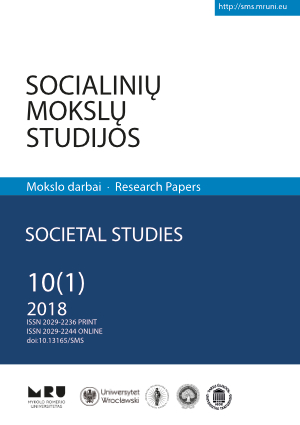THE “ICON-LIKE” APPROACH TO VISUALISATION OF OPPOSING IMAGERY IN A SIBERIAN TEXT IN ILLUSTRATIONS BY SERGEY ELOYAN FOR VIKTOR ASTAFYEV’S THE TSAR FISH
THE “ICON-LIKE” APPROACH TO VISUALISATION OF OPPOSING IMAGERY IN A SIBERIAN TEXT IN ILLUSTRATIONS BY SERGEY ELOYAN FOR VIKTOR ASTAFYEV’S THE TSAR FISH
Author(s): Nina Panina, Natalia BartoshSubject(s): Visual Arts, Studies of Literature
Published by: Mykolas Romeris University
Keywords: Viktor Astafyev; Sergey Eloyan; Oleg Mikhailov; book illustration; visualisation of opposing imagery; Orthodox icon;
Summary/Abstract: A developed tradition of illustrating Siberian texts in Russian literature makes it possible to identify several approaches and corresponding principles for interpreting texts through illustrations. The approach examined in this article can be for convenience called an “icon-like” as it focuses on the Orthodox tradition in visual arts and is related to corresponding iconographic patterns in illustration. One of the key representatives of this approach is an Irkutsk artist Sergey Eloyan, who turned to the art of book illustration in 2003 within a large-scale project by Gennady Sapronov aimed at publishing the most outstanding works by Siberian writers. An edition of The Tsar Fish by Viktor Astafyev ranks significantly in this series. As the book is very complex in terms of genre, the “icon-like” approach became a means for the artist to visualise the liminal chronotope and paradoxical nature of Astafyev’s images when illustrating the piece. Moreover, Eloyan challenged a certain tradition for illustrating Astafyev’s books which complicated the artist’s task. Established in the Soviet period when Astafyev’s works were subjected to severe censorship, that tradition of illustrating did not allow to reveal the fundamental for the author inseparability of the beautiful and unbearable, the substance of life and the substance of death through a set of pictorial imagery. When freed from the shackles of censorship in the post-Soviet period, The Tsar Fish turned out to be saturated with completely polar imagery: the beautiful and disgusting, the high and low do not simply coexist, but merge into something inseparable. It would appear very difficult to even imagine an integral concept of illustration that could translate such a wide range of emotions into static imagery. Since the beginning of the 2000s, however, two attempts have been made to create a systematic pictorial set of images for The Tsar Fish. The first of these are Eloyan’s illustrations, and the second those of Oleg Mikhailov in 2013. Both of these are conceptual interpretations of the task of visualising an artistic text at the junction of traditional and new approaches of book illustration, made from different perspectives.
Journal: Socialinių mokslų studijos
- Issue Year: 10/2018
- Issue No: 1
- Page Range: 48-60
- Page Count: 13
- Language: English

